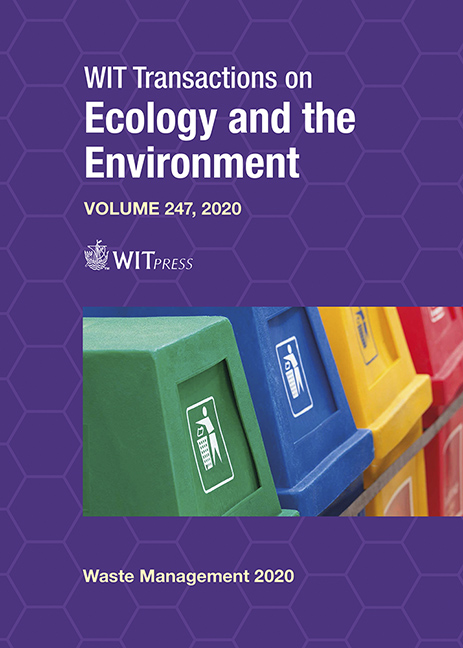HAZARDOUS WASTE MANAGEMENT IN COSTA RICA: AN ACADEMIC–SMALL COMPANY COLLABORATION
Price
Free (open access)
Transaction
Volume
247
Pages
10
Page Range
161 - 170
Published
2020
Paper DOI
10.2495/WM200151
Copyright
WIT Press
Author(s)
LUIS G. ROMERO-ESQUIVEL, ANDREA ACUñA-PIEDRA
Abstract
Hazardous waste treatment options in developing countries are limited. The main problems include scarce or no specialized facilities, and a lack of analytical tools for characterization. In some cases, there are also minimal regulations. Costa Rican hazardous waste legislation dating from the 1990s was improved over the last decade. We describe the management system implemented in Costa Rica that permits an increase in the amount of hazardous waste that could be properly managed, from around 7,432 tons in 2015 to 31,268 tons (76%) in 2019. Similarly, during the same period, the number of official waste-generator companies and specialized waste management companies increased from 107 to 736 (85%), and from 11 to 35 (69%), respectively. We also present the collaboration of a public university with a local small company. Characterization of hazardous waste and evaluation of possible treatment methods were performed at a laboratory level in the university. Later, the small company, under university staff supervision, scaled up the selected treatment method. This small company has two reactors with capacities for 2,000 and 500 kg, both are equipped with pH and oxidation potential reduction sensors that control the pumps used for adding acid, base or oxidants into each reactor. Examples of successfully treated liquid waste are sulfide and cyanide wastes from a metal finishing company. Both types of wastes were oxidized using chlorine, to obtain calcium sulfate and nitrogen gas, respectively. Heavy metal waste is precipitated and then solidified using Portland cement. Hazardous organic waste is normally sent to a local cement kiln for co-processing; however, some waste does need pre-treatment before burning, such as the case of di-isocyanates, which, during burning, could generate hydrogen cyanide. So the waste has to be transformed into urethanes by an aqueous reaction, with ethanol and ammonia. This study demonstrates cooperation between academia, through technical knowledge and analytical skills, and industry, providing appropriate infrastructure and management in accordance with local regulation.
Keywords
Costa Rica, developing countries, environmental legislation, hazardous waste, hazardous waste treatment, university–industry cooperation, waste disposal methods





